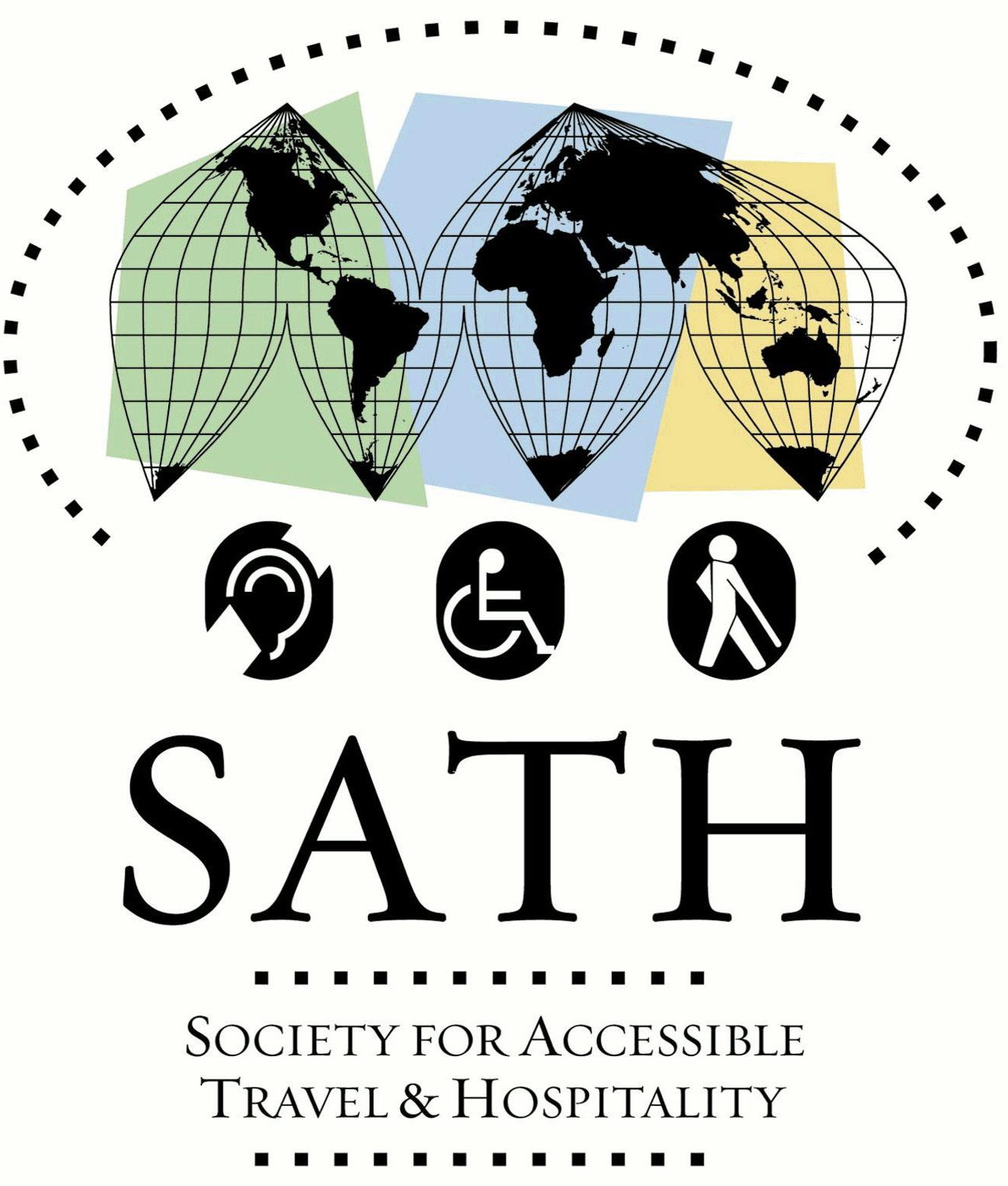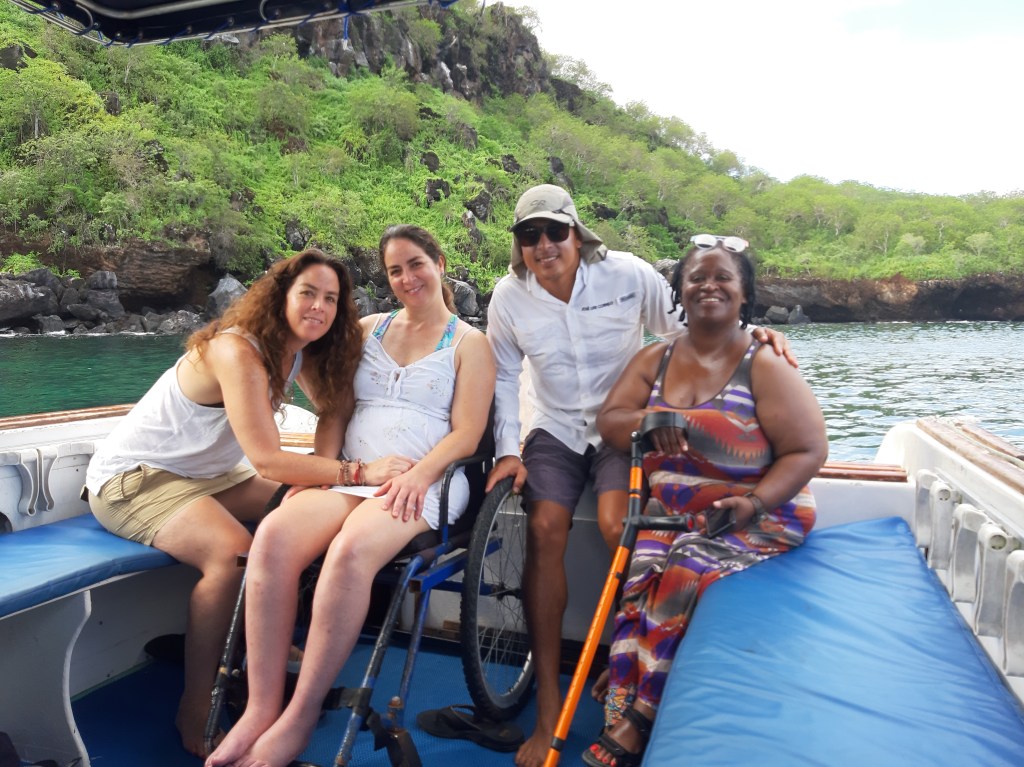“Start by doing what’s necessary; then do what’s possible; and suddenly you are doing the impossible.” -Francis of Assisi
I believe this phrase fits perfectly for a person like me, who has to learn how to live with a disability. Almost five years ago, I had a horseback riding accident that left me with a paraplegia from my waist down, which means I cannot feel or move any part of my body below my ribs. In a matter of seconds, my life had an irreversible turnabout, which would not only bring difficulties, but several life lessons and blessings as well. I feel blessed by the fact that I am still alive, with full use of my mind, and am able to share my life with my children, who at the time of the accident were 1 and 3 years old. I have felt the love and support of family and friends more intensely than ever. And I have proven myself to be stronger than I ever imagined possible. Perhaps my “new life” has brought more blessings than difficulties. But, until recently, there was something that really upset me and I simply decided not to give it much thought. This was how challenging it would be for me to travel.
“If living with a disability is an adventure, imagine traveling with it.”- Alfonso Eliecer Morales, Director of REDTAEC (Accessible Tourism Network- Ecuador)
ME & TRAVELING
I love to travel. I loved to work in the tourism field. I traveled for work, and worked so I could travel. I’ve always been passionate of promoting my country as a unique destination. I wrote travel articles for over 15 years for our family business: THIS IS ECUADOR.
As a journalist, I traveled countless times throughout my wonderful country. I was invited to several Press Trips. I also worked for a Public Relations office, where I got to organize and accompany national and international journalists on Press Trips throughout Ecuador. I loved to share all the wonders I discovered in my own country both with our magazine-guide’s readers as well as with journalists, family and friends.
I inherited this passion from my dad, Gustavo Vallejo, who founded This is Ecuador over 50 years ago. To this day, thanks to my father, my whole family has traveled to wonderful places in our biodiverse country, as well as abroad. Our family trips are definitely some of my most cherished treasures.
Moreover, I grew up with my dad’s glittering eyes as he shared his adventures, and with his weepy eyes as he contemplated a beautiful scenery. I grew up with pride as I watched him become the center of attention as soon as he enthusiastically shared his passion for traveling and for Ecuador with our extended family, friends, co-workers… His passion is contagious.

MY FAMILY AND THE GALAPAGOS
At age 18, my father traveled to the enchanted islands by boat as a “guide” for a National Geographic expedition. I cannot imagine the Galapagos my dad was able to witness: no cruise lines, no hotels, no National Park regulations for visitors, no trails throughout the rough rocky terrain…
Thanks to him and my work in THIS IS ECUADOR, I have traveled to the Galapagos on countless occasions. I’m definitely blessed!
Over 16 years ago, I also had the opportunity to work together with the Galapagos National Park and the Charles Darwin Foundation in Isabela Island, on a project related to the control and eradication of introduced species. Although it was only for a few months, this experience was one of the best in my life!

BUT NOW THAT I´M IN A WHEELCHAIR… GALAPAGOS…. ACCESSIBLE? NO WAY!
Things have changed since my dad first arrived to Galapagos… some for good, some definitely not. But it is certain that now more and more travelers are able to enjoy this “living laboratory of evolution”.
But… accessible for all? Until recently, I was almost sure not.
I quit working for the magazine after my accident.
With my new life in a wheelchair… adventure travel? The Galapagos? No way! I comforted myself by thinking “I’m glad I got to do so much of it when I could.”
However, it really upset me to think I would not be able to continue enjoying these adventures. And even more so to think I would not be able to share my passion for the outdoors with my kids.
Thanks to LATIN AMERICA FOR ALL…. I did it again!!
In a different way of course, but it happened! Rolling through those trails I once left my footsteps on felt like magic. I was able to enjoy one of my favorite activities: snorkeling. We also did kayaking, sightseeing, swimming and more… Next time I’ll make sure to go scuba diving! This trip to Galapagos was dream come true!
I felt immensely thankful to life. And of course, to LATIN AMERICA FOR ALL.

MY GALAPAGOS EXPERIENCE IN A WHEELCHAIR
I traveled to San Cristóbal Island, and stayed at the town of Puerto Baquerizo Moreno. The highlight of this town is the main street with a boardwalk next to the sea, and from which, at a point, you can spot several sea lions (and unfortunately smell them as well).
In the Galapagos, the attraction is nature. (The tourist infrastructure in all of the inhabited islands can definitely be disappointing. With the exception of a few expensive hotels, most serve its purpose but could definitely improve.) The hotel we stayed at, Blue Marlin, had clean spacious rooms with air conditioning. The bathrooms are accessible and have warm water. However, all bathrooms have a tub, which might be a problem for people with certain disabilities. Another accommodation available is hotel Casa Playa Mann, which is located close to the beach and is very cozy. Unfortunately, it only holds one accessible room. Moreover, its friendly service and enjoyable social areas make it very appealing. Social areas include a small garden with hammocks, a coffee room and a restaurant.
If you would like a better or luxurious accommodation, make sure you request LATIN AMERICA FOR ALL for an upgrade, and be aware that price would rise significantly.

THE LOCAL TOURIST OPERATOR
The tourist operator in Galapagos is outstanding! Their most remarkable asset is their staff! Both our guide, José Luis Cornejo, alias Pepo, and the support people in charge of logistics were extremely helpful, especially Paolo Vásquez. They would go beyond their responsibilities in order to make our trip pleasant. You could definitely tell they enjoy their job, and their passion for their home island is inspiring!
On top of their evident knowledge and training, they offer top notch equipment, including special wheelchairs for the trails, beach wheelchairs, flotation devices to make snorkeling comfortable, wetsuits, and snorkeling gear.
Also, worth mentioning is their flexibility to adapt to the needs of their passengers. The staff was respectful of the times we needed for certain needs or activities. They invited us to participate in several activities; however, they never made us feel pressured, but rather confident. We always felt that we we were in excellent hands.

THE FOOD
I really enjoyed the food! Whenever I am at sea level, I like to eat fresh fish and seafood. And I found it delicious at San Cristóbal!
I believe the restaurants were carefully selected by our operator. Although some of them did not seem very good by just looking at the place, the food was quite tasty. The ones I liked the best were El Descanso Marinero, where I had delicious clamshells, and which had a folkloric marine decoration. Maui Resto Bar, with a laid-back tropical ambiance with trees inside. Here I dined a superb prawn and we shared nice cocktails. Finally, the restaurant where we had lunch at on the day of our visit to the highlands, Ottoy, located in a farm with a lush tropical vegetation and overviewing the highlands all the way to the sea. Here I had a fish dish served with rice, salad and a delicious natural fruit juice.
DAY BY DAY
DAY 1:
- Arrival to hotel
- Lunch
- Briefing
- Snorkel at Lobería Beach: Although the main purpose of this visit is to try the snorkeling equipment and find what suits your needs best, it is a great introduction to the Galapagos. This beach of white sand and clear sea, close to town, is inhabited by sea lions, the endemic marine iguanas, and a variety of marine birds. In the water one can encounter some of the most common species of the Galapagos Marine Reserve, including sea turtles, rays, a variety of fish,and, with some luck, white-fin sharks.

Day 2: Kayak + Interpretation Center + Tijeretas View Point
Kayaking around the bay was quite relaxing. We caught sight of several animals, both at the rocks on the shores, as well as on the boats that were anchored in the bay. We saw sea lions, marine iguanas, crabs, blue-footed boobies and other marine birds.
After lunch, we took a quick tour of the San Cristobal Interpretation Center to learn about Galapagos natural and cultural history, and the challenges for the future of the conservation of the archipelago.
Later we continued on a trail that guided us to Tijeretas View Point to admire the island from above.

Day 3: Giant tortoise breeding center + Highlands
After breakfast we visited Cristobal’s Giant Tortoise breeding center, to admire the giants after whom the islands are named. The National Park has done a good job bringing up these tortoises and saving them from extinction, after they almost completely vanished due to their use as a delicacy for buccaneer and pirate ships of the XVII and XVIII centuries. The Galapagos Tortoises also lost (and keep losing in a smaller rate) their eggs and hatchlings to introduced species such as pigs and dogs, and had an unfair competition for food with goats and cows. Today, the Giant Tortoise population is increasing, and several individuals have been released in their natural habitat. However, some subspecies are already extinct.
Then we continued our trip to the highlands, where we had lunch at a beautiful restaurant of lush gardens, Ottoy, which I referred to when I wrote about food.

Day 4: Snorkeling at Kicker Rock and visit to Manglesito Beach
For me, this was the highlight of the whole visit to San Cristobal. Kicker Rock is a stunning tuff cone rising over 140 meters out of the ocean, a 45-minute boat ride from the town. Locals call it “Leon Dormido” (Sleeping Lion). Several marine birds live on Kicker Rock, including blue footed boobies, gulls and frigate birds, but to appreciate the best of this visit, do not miss the snorkeling! Swimming at the edge and through the canal that divides this formation in two, the walls are covered with colorful algae and starfish. We spotted sea turtles, eagle rays, white-tip sharks and even hammerhead sharks! It sounds scary, but in fact, these animals seemed to not even notice our presence.

During our navigation, we were so lucky! We were accompanied a group of dolphins that swam and jumped around our boat for at least 10 minutes.

Later we had lunch at the boat and went to the nearby beach of Manglesito to rest for a bit and enjoy the beautiful scenery. It is a beach of white sand and mangroves, thus the name “Manglesito”. You can also snorkel around if you’d like, or just rest in the beach after all the excitement of Kicker Rock.
Day 5: Return to Quito
LATIN AMERICA FOR ALL contact info:
Phone: +593997659024
WhatsApp : +593997659024
Facebook: https://www.facebook.com/latinamericaforall
Instagram: https://www.instagram.com/latinamericaforall/
Email: sales@latinamericaforall.com
Note: in their website they offer online chat

